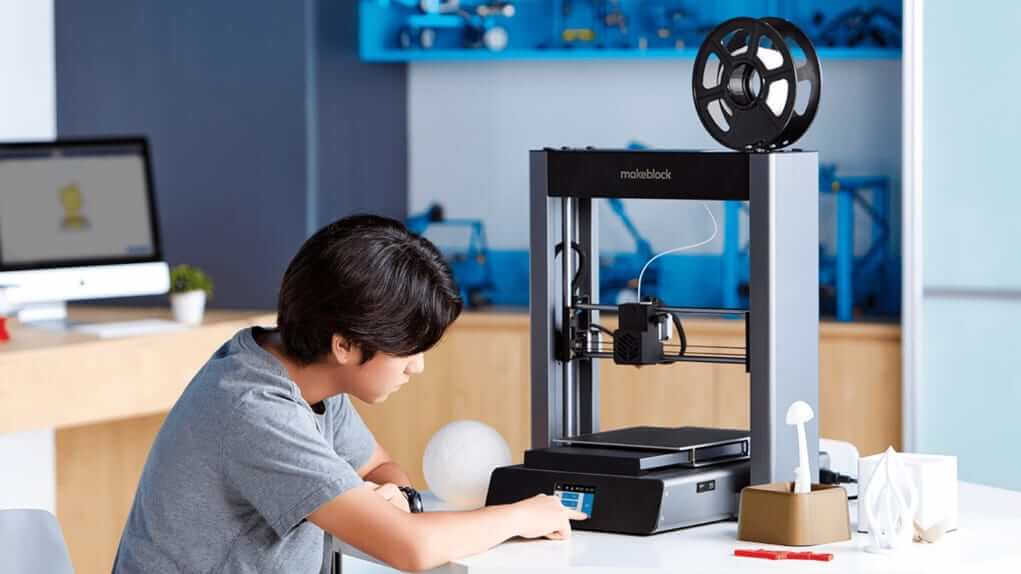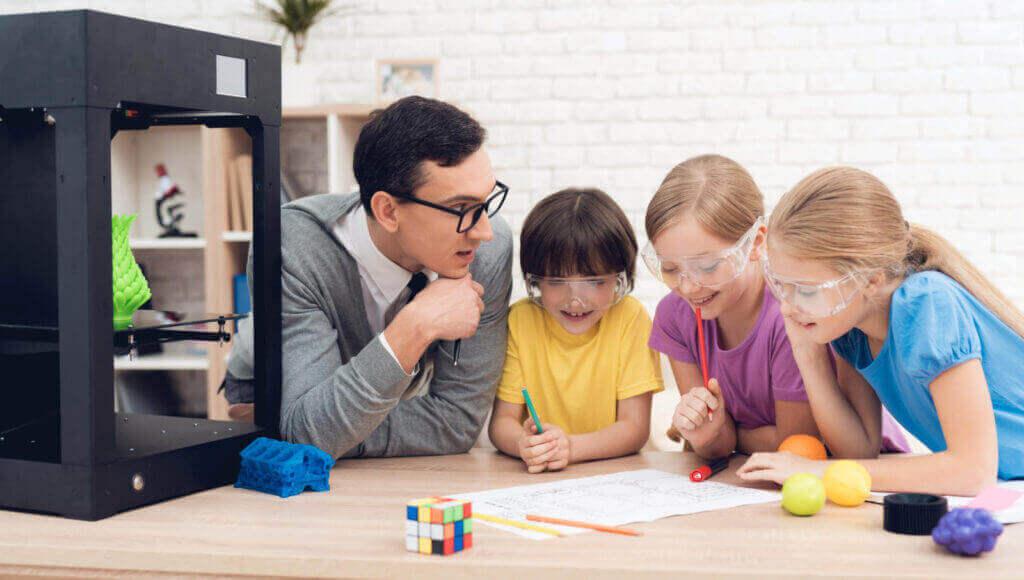
With the growing importance of science, technology, engineering and mathematics (STEM), 3D printing is occupying a greater interest in schools all across the world. It provides more ideas to develop and makes education more fun. From engaging students, to motivating their learning interests, 3D printing improves results.
The kind of exposure that coming generation has to technology is unprecedented. Hence, there is a need to update in the way concepts are taught in school. You cannot limit today’s child only to textual theories. The need of the hour is to read the textual theory, apply it in a minimal amount of time to teach him to experiment and note results. And then jump on to another theory.
3D printing technology is a very flexible technology. And it includes a lot of subjects as mentioned above. So, if you are teaching a kid to 3D print, you are essentially teaching him more than one subject. Apart from that, the designing aspect of 3D printing technology exposes a student to pure creativity. It demands him or her to think out of the box and customize something different from what’s available on hand. Having stated so, we present in front of you seven different benefits of 3D printing in children’s education.
-
Generating inventor-like mindset

3D Printing technology demands students to think and predict as creators do. It promotes the idea of identifying needs of creation and not buying or consuming somebody else’s creations. And plus it’s a complete field of study, right from the concept generation, to the product creation, students are fully involved. They learn the concept of failing and learning from iterations.
When you have a 3D printer and you are trying to make a design, if you forget to take into consideration one single aspect, it has some or the other implications. But you only realize that, once the part is printed. So, you learn to be cautious about every aspect of creation. At the same time, you learn to think about as many aspects as possible.
-
Reviving art

Where there is imagination, there is art. 3D printing technology is completely based on 3D design files which in turn are based on imagination and visualizing parts and functional prototypes. Students will be able to become designers and creators using this cutting edge technology. Pick3DPrinter has a list of the best free 3D modeling software for beginners, that teachers are using to familiarize their students with the process of creating their own 3D design files.
Thanks to the STEM education, students are encouraged to connect different subjects and find relativity in application of each one of them. 3D printing will take the encouragement to one step further and bank on the creativity aspect of producing parts and functional prototypes.
-
Improve Student participation

With books, the major task of teachers was to keep a student engaged. This was mainly because there was less exposure to him or her to the practicality of what he or she was studying. But with 3D printing technology, if schools have 3D printers, educators can easily illustrate what they are trying to convey to students via theory.
It encourages the process of interactive learning. Increases engagement within the classroom and improves the student participation. In fact an educator can also ask students to team up with each other and complete the full process. This will help students learn what it is to work in a team and coordinate with different minds.
-
Making them realize their digital responsibility

There are plenty of 3D printing communities that let everyone become a part of them. By becoming a part of the community, the members are given access to view, comment, like and question design of other members. This will increase communication amongst students. And inspire conversations that will give an insight to the one who wants to know more about the design, directly from the one who has made that design.
Doing all this, will make them responsible of two primary aspects such as:
-
What to share?
-
How to share?
Getting answers to this question, students will also learn how their designs can be better than what they currently are!
-
Turn subject into careers

STEM education which is something that most of the students do not pursue after passing from the school or university can be carried out throughout their life. There can easily be industry-specific careers based on this. 3D printing technology can inspire the curiosity in STEM subjects by providing students with a chance to understand complex concepts.
This; they can do by experimenting with the theories that they learn about various materials and mechanisms. By testing their theories, they can develop industry-specific parts and functional prototypes and seek a long term career in the same. Currently, 3D printing is found extremely beneficial in fields such as healthcare, aerospace, jewelry, and manufacturing. But in the coming years, experts predict 3D printing to be a part of almost all the industries such as consumer goods, travel, daily life products, etc.
All this is very encouraging as a student. The very chance of doing the same thing that you learn doing in school for earning money is lucrative and something that every student would look up to.
The Conclusion
A lot of experiments have been going on in this area and in the year 2017, the Educator reported how Marist College Ashgrove, Brisbane, Queensland was making use of 3D printers for improving teaching and learning across its campus. Since then, many colleges, universities as well as schools have started to imply this technology and got amazing results.
If experts are to be believed, 3D printing engages students more profoundly to learn lessons. Seeing on the educators’ side as well, 3D printing is inspiring them to develop creative ways for helping students. And this capability of 3D printing technology to touch not only on the students’ part and ask them to rethink their ways of thinking, but also on the teachers’ part is something that sets it apart from other technologies. Overall, 3D printing is ensuring that education grows, and allowing students to learn more and more complex subjects with detailing.



























